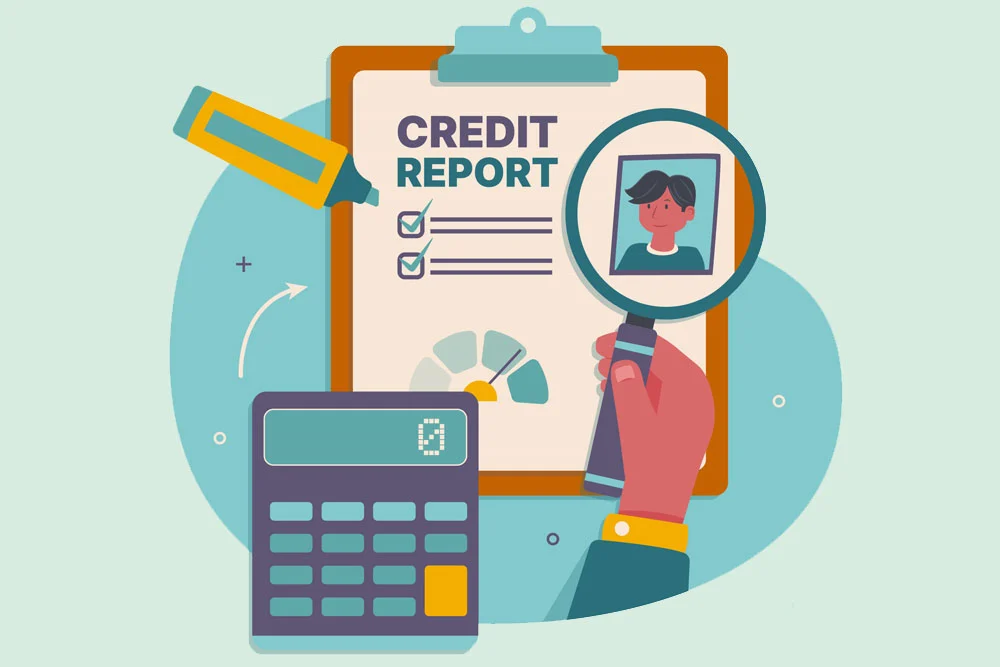5 Types of Bad Credit Reports: How to Fix and Rebuild Your Credit
- Bad Credit, Personal Loans

Having a good credit report and score can help you achieve your financial goals, such as buying a home, getting a car loan, or starting a business. However, having a bad credit report and score can make it harder to get approved for credit or get favorable terms. Bad credit reports can also affect other aspects of your life, such as your employment opportunities, insurance rates, or rental applications.
If you have ever applied for a loan, a credit card, or any other form of credit, you know how important your credit report is. Your credit report contains information about your credit history, such as how much debt you have, how often you pay your bills on time, and whether you have any negative items like bankruptcies, collections, or foreclosures. Your credit report also determines your credit score, which is a number that summarizes your creditworthiness and affects the interest rates and terms you can get from lenders.
There are many reasons why you might have a bad credit report. Some of them are due to your own mistakes or mismanagement of your finances, while others are due to errors or fraud by others. In this article, we will discuss five types of bad credit reports and how to fix them.
1. Late payments
One of the most common and damaging types of bad credit reports is having late payments on your accounts. Late payments show that you are not reliable or responsible with your debts and can lower your credit score significantly. Late payments can stay on your credit report for up to seven years from the date of the delinquency.
How to fix it
The best way to fix late payments when they show up in bad credit reports, is to avoid them in the first place by paying your bills on time every month. If you have missed a payment or are about to miss one, contact your creditor as soon as possible and try to work out a payment plan or request a goodwill adjustment. You can also set up automatic payments or reminders to ensure that you don’t miss any due dates. If you have multiple late payments on different accounts, you may want to consider debt consolidation or credit counseling to help you manage your debts more effectively.
2. High credit utilization
Another type of bad credit reports is having high credit utilization, which is the ratio of your total outstanding balances to your total available credit limits. High credit utilization shows that you are using too much of your available credit and may be overextended or struggling to pay off your debts. High credit utilization can also lower your credit score because it indicates a higher risk of defaulting on your obligations. Ideally, you should keep your credit utilization below 30% on each account and across all accounts.
How to fix it
The best way to fix high credit utilization when trying to fix bad credit reports is to pay down your balances as much as possible and as soon as possible. You can also try to increase your credit limits by requesting a credit line increase from your creditors or opening new accounts with low or no balances. However, be careful not to apply for too many new accounts at once, as this can result in hard inquiries that can also hurt your credit score. Another option is to transfer some of your balances to a lower interest rate card or a balance transfer card that offers an introductory 0% APR period.
3. Collections
Collections are accounts that have been sent to a third-party collection agency because you have failed to pay them for a long period of time. Collections are one of the worst types of bad credit reports because they show that you have defaulted on your debts and have not resolved them with your original creditors. Collections can stay on your credit report for up to seven years from the date of the first delinquency that led to the collection.
How to fix it
The best way to fix collections from bad credit reports, is to pay them off in full or negotiate a settlement with the collection agency. You can also try to dispute the collection if you believe it is inaccurate or invalid. For example, if the collection is older than seven years, if it belongs to someone else, if it has been paid off already, or if it violates the Fair Debt Collection Practices Act (FDCPA). You can dispute the collection by sending a written letter to the collection agency and the credit bureaus with proof of your claim. If the collection is verified as accurate and valid, you can still try to request a pay for delete agreement, which means that the collection agency will remove the collection from your credit report in exchange for payment.
4. Bankruptcies
Bankruptcies are legal proceedings that allow you to discharge some or all of your debts under certain conditions. Bankruptcies are one of the most severe types of bad credit reports because they show that you have been unable to repay your debts and have resorted to a drastic measure. Bankruptcies can stay on your credit report for up to 10 years from the date of filing, depending on the type of bankruptcy you filed.
How to fix it
The best way to fix bankruptcies from bad credit reports, is to rebuild your credit after the bankruptcy is discharged or completed. You can do this by paying your bills on time, keeping your credit utilization low, and adding positive information to your credit report, such as secured credit cards, installment loans, or authorized user accounts. You can also try to dispute the bankruptcy if you believe it is inaccurate or invalid. For example, if the bankruptcy is older than 10 years, if it belongs to someone else, or if it has been dismissed or discharged.
5. Identity theft
Identity theft is when someone uses your personal information, such as your name, Social Security number, or credit card number, to open accounts or make transactions in your name without your permission. Identity theft is one of the most dangerous types of bad credit reports because it can damage your credit and expose you to financial and legal risks. Identity theft can result in fraudulent accounts, unauthorized charges, or inaccurate information on your credit report.
How to fix it
The best way to fix identity theft when fixing bad credit reports, is to prevent it in the first place by protecting your personal information and monitoring your credit regularly. If you suspect that you have been a victim of identity theft, you should take immediate action to stop the fraud and limit the damage. You should:
- Contact the creditors or financial institutions where the fraud occurred and close or freeze the accounts.
- Contact the credit bureaus and place a fraud alert or a credit freeze on your credit report.
- File a police report and an identity theft affidavit with the Federal Trade Commission (FTC).
- Review your bad credit reports and dispute any fraudulent or inaccurate information with the credit bureaus and the creditors.
- Change your passwords and PINs and update your security questions and answers.
- Consider using an identity theft protection service or a credit monitoring service to alert you of any suspicious activity on your credit or personal information.
Conclusion
In conclusion, addressing and fixing bad credit reports is a crucial step towards improving your financial health. Whether it’s late payments, high credit utilization, collection accounts, bankruptcy, or identity theft, taking proactive measures can help you regain control.
By reviewing your reports, disputing inaccuracies, negotiating settlements, and adopting responsible financial habits, you can gradually rebuild your credit. Remember, it takes time and patience, but with perseverance, you can overcome these challenges and pave the way for a brighter financial future.
Looking for a persona loan while fixing Bad Credit Reports??
Get Personal Installment Loan in 30 Minutes from Cascade Springs Credit Loans and you can use it for anything you want or need
You can get up to $800 as soon as the next business day.
Applying DOES NOT Affect Your Credit Score







